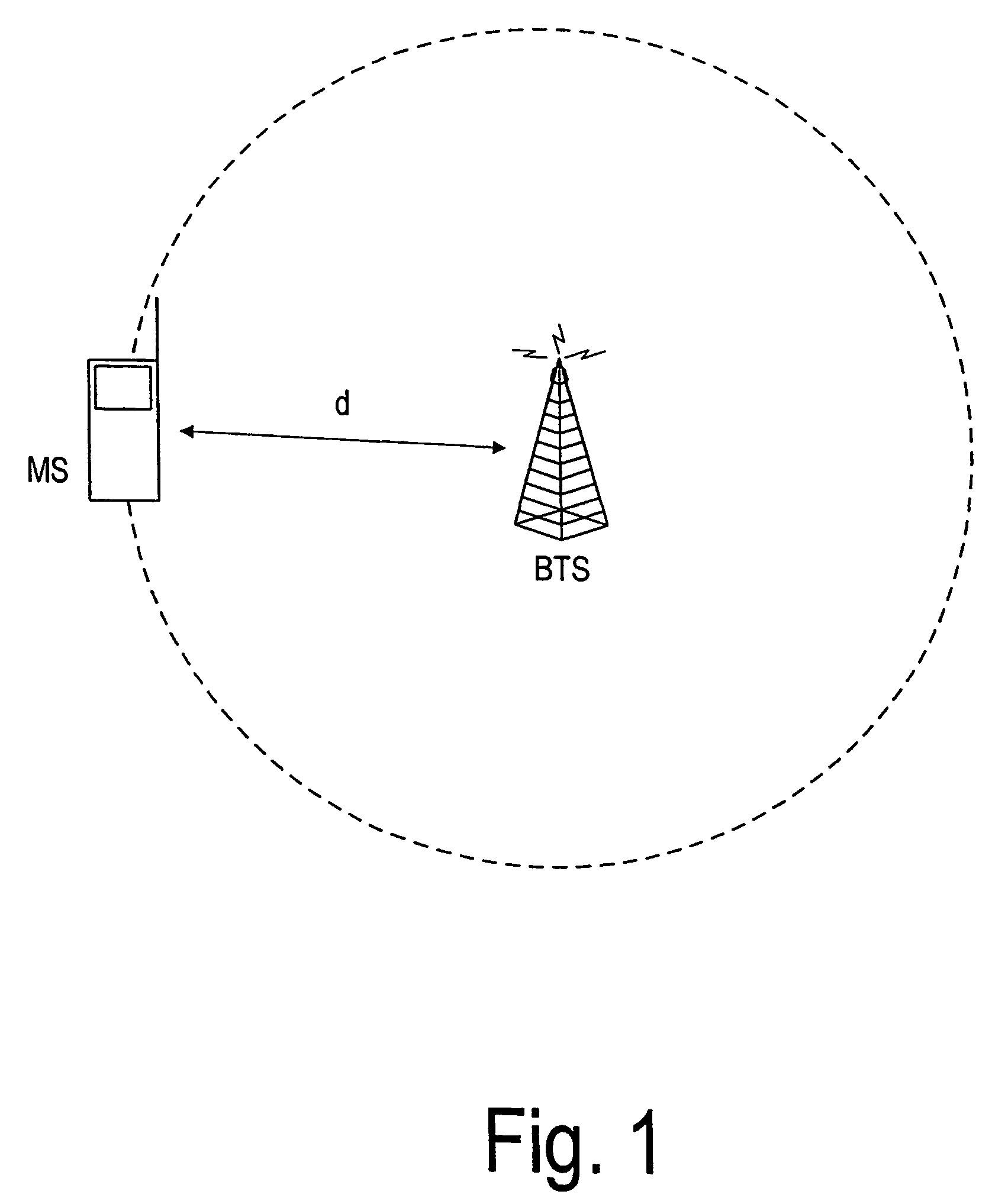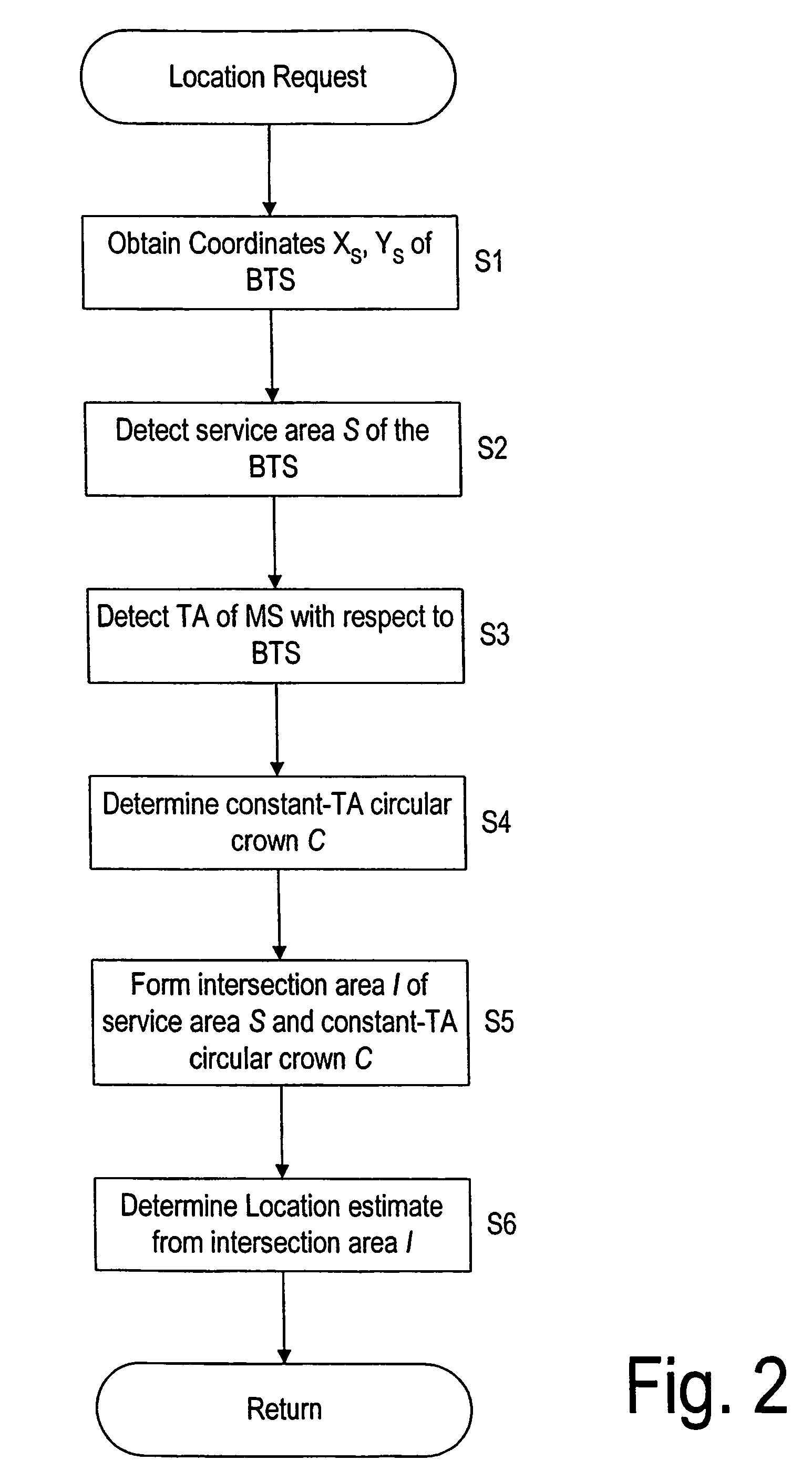User positioning
a positioning device and user technology, applied in the field of user positioning, can solve the problems of low use of positioning devices, poor measurement quality, and inability to use such technologies
- Summary
- Abstract
- Description
- Claims
- Application Information
AI Technical Summary
Benefits of technology
Problems solved by technology
Method used
Image
Examples
first embodiment
[0103]According to the first embodiment, an algorithm is used that extends the Timing Advance (TA) concept.
[0104]Namely, from the service deployment point of view, the Timing Advance procedure has a very high potential. Operators can start offering location services based on the Timing Advance system. Such services can be provided to all customers with reasonable additional costs (for both customers and operators). The introduction of services based on the Timing Advance procedure allows at the same time to build awareness and create needs of location-based services in the market. When a sufficient set of location-based services have been launched and the market demand for better location services exists, operators can start deploying more expensive location systems in their networks starting with the Enhanced OTD and continuing with the Assisted GPS.
[0105]The algorithm according to the first embodiment extends the Timing Advance (TA) concept by integrating the information available...
second embodiment
[0301]According to the first embodiment, the procedure to locate Mobile Stations (MS's) uses Cell Identity (CI), Timing Advance (TA), radio coverage data and statistical models for the TA measurement. The procedure according to the first embodiment uses only information related with the serving Base Transceiver Station (BTS).
[0302]However, according to the second embodiment described in the following, an extension of the procedure of the first embodiment is used, which includes in the location calculation the hearability area of neighbor BTS's measured by the MS to be located.
[0303]According to the first embodiment, the location algorithm is also implemented according to the VELOCITA (VEctorial LOcation with CI-TA) concept. The extension proposed in this embodiment can also be used in such implementation.
[0304]According to the second embodiment, the hearability area of the neighbor BTS's is in particular used. In this context, such areas designate the geographical locations where th...
third embodiment
[0344]In the following, a third embodiment is described in which Cell Identity (CI), Timing Advance (TA) and strength of received Signals with radio coverage information are used to locate mobile stations.
[0345]In the GSM system, the identity of the i-th neighbor BTS, NIi, used in the second embodiment can be obtained in practice from the pair of parameters BSIC (Base Station Identity Code)+BCCH Carrier included by the MS in the normal measurement reports (layer 3 messages) sent to the serving BTS.
[0346]Measurement reports include, among other information, also the signal strength (RXLEV) measured by the MS on the BCCH frequency of the neighbor BTS's. This information can be used to refine further the procedure according to the second embodiment, in the sense that the contribution of the neighbor cells in the location calculation can be extended to include, beside the identity of neighbor cells (i.e. hearability areas), also the actual strength of signals measured by the MS.
[0347]Th...
PUM
 Login to View More
Login to View More Abstract
Description
Claims
Application Information
 Login to View More
Login to View More - R&D
- Intellectual Property
- Life Sciences
- Materials
- Tech Scout
- Unparalleled Data Quality
- Higher Quality Content
- 60% Fewer Hallucinations
Browse by: Latest US Patents, China's latest patents, Technical Efficacy Thesaurus, Application Domain, Technology Topic, Popular Technical Reports.
© 2025 PatSnap. All rights reserved.Legal|Privacy policy|Modern Slavery Act Transparency Statement|Sitemap|About US| Contact US: help@patsnap.com



